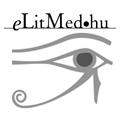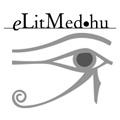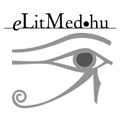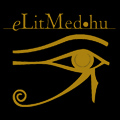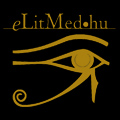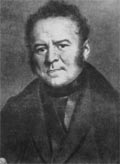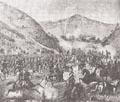The eLitMed.hu medical portal uses computer cookies for convenient operation. Detailed information can be found in the Cookie-policy.
Lege Artis Medicinae - 2001;11(03)
Content
[Antiatherosclerotic effect of ACE inhibitor drugs]
[Based on animal and human research data, it is likely that renin-angiotensin-aldosteron system has an important role in the pathogenesis and progression of atherosclerosis. It has been demonstrated in several large clinical trials that ACE inhibitors reduce the risk of ischemic events in patients with left ventricular dysfunction. Whereas some benefits of ACE inhibitors may be related to the lowering of blood pressure, other specific effects on vasculature have also been proposed. ACE inhibitors appear to possess unique cardioprotective and vasculoprotective properties even for patients without hypertension or left ventricular dysfunction. Recent data suggest that most patient with atherosclerotic cardiovascular disease should be considered for ACE inhibitor therapy, unless they are intolerant or have contraindication for the drug. The goal of this article is to review the data from clinical trials that support the anti-atherosclerotic and antiischemic effects of ACE inhibitors.]
[Change of resistance among Gram-positive bacteria]
[Physicians are faced with increasingly rapid emergence and spread of antibiotic resistant Gram-negative bacilli and, in particular, Gram-positive bacteria. It poses a major problem for hospitals and general practice as well. The article focuses on the change of resistance of four important and frequently occurring Gram-positive bacteria (Staphylococcus aureus, coagulase-negative staphylococci, Enterococcus spp. and Streptococcus pneumoniae). Among the therapeutic choices recently introduced fluoroquinolones, oxazolidinones, streptogramins and ketolids are reviewed.]
[Treatment of invasive fungal infections: present and future]
[In immunocompromised patients morbidity and mortality caused by invasive fungal infections is increasing. It is difficult to establish early diagnosis of mycosis by laboratory tests currently available. Antifungal drugs are often toxic, their spectrum of action is limited and their cost is substantial. In the search for alternative therapeutic modalities, antifungal compounds were synthesised against several targets of the fungal cell. At present, the following drugs have almost completed drug registration procedures: voriconazole, posaconazole and ravuconazole from the new azol group, a candin named caspofungin, and the polyene liposomal nystatin. Nikkomycin Z, sordarins and some other compounds are also seem to be promising. In addition to new antifungal drugs, substantial improvement in the outcome of invasive fungal infections requires extended diagnostic capabilities, as well as a reappraisal of our principles of prophylaxis and treatment.]
[Treatment of pneumothorax in cystic fibrosis]
[INTRODUCTION - More and more children affected by cystic fibrosis reach adulthood. The frequency of complications, such as pneumothorax, increases parallel with the long disease course. PATIENTS AND METHODS - The treatment of 17 manifestations of pneumothorax in 10 young adult cystic fibrosis patients in our institute was analysed retrospectively. RESULTS - Depending on the extension of pneumothorax and the clinical state of the patients the first choice of the treatment was observation alone in 6 cases, insertion of pleuracan in 3 cases and tube thoracostomy in 8 cases. Due to ineffective suction, thoracotomy was necessary in 6 patients, bilaterally in 3 cases. CONCLUSION - The outcome of conservative treatment even in "small, circumscribed pneumothorax" cases of symptom-free patients is uncertain and risky. Insertion of a pleuracan is recommended only in urgent, life-threatening cases, but definitive result should not be expected. If possible, chest drainage should be chosen as the first procedure. After 5-7 days of ineffective chest suction, thoracotomy is mandatory. Recurrence of the pneumothorax is direct indication for surgery. Antibiotic treatment is suggested for the duration of drainage, as well as for the surgical procedure.]
[The role of chief pathologist in training the new generation]
[INTRODUCTION - The present situation of pathology is disadvantageous, can even be considered critical in Hungary. There are not enough pathologists, the number of experienced, competent specialists is decreasing and young doctors do not prefer the specialty. We try to analyze the background of this situation based on our experience as tutors in medical education. METHODS - Participants of the annual fiveweek long exam preparation course took part in an anonymous survey. Based on this, we collected data on professional activity, working conditions and continuing education of young pathologists before their national specialist examination. Data were collected from the period 1991-2000. RESULTS AND CONCLUSION - Our experience suggest that chief pathologists of hospitals play key role for the future existence of this specialty in Hungary besides financial appreciation of the specialists. For successful replacement of elder colleagues with young specialists the task is threefold: 1. Getting young doctors acquainted with the specialty and help them prepare for the national exam. 2. In case of young specialists, professional support through continuous education as well as career-preserving support is necessary. 3. Choosing the best possible successor among colleagues for the position of chief pathologist and helping to prepare for this task.]
1.
Clinical Neuroscience
[Headache registry in Szeged: Experiences regarding to migraine patients]2.
Clinical Neuroscience
[The new target population of stroke awareness campaign: Kindergarten students ]3.
Clinical Neuroscience
Is there any difference in mortality rates of atrial fibrillation detected before or after ischemic stroke?4.
Clinical Neuroscience
Factors influencing the level of stigma in Parkinson’s disease in western Turkey5.
Clinical Neuroscience
[The effects of demographic and clinical factors on the severity of poststroke aphasia]1.
2.
Clinical Oncology
[Pancreatic cancer: ESMO Clinical Practice Guideline for diagnosis, treatment and follow-up]3.
Clinical Oncology
[Pharmacovigilance landscape – Lessons from the past and opportunities for future]4.
5.
